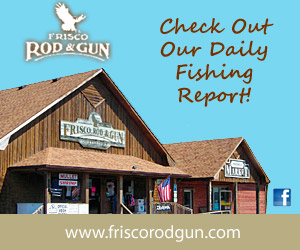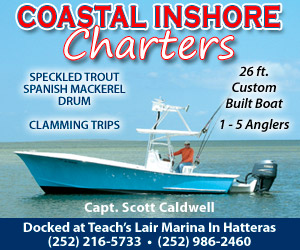Commercial fishermen sold 42.9 million pounds of fish and shellfish to North Carolina seafood dealers in 2020, a decrease of 19% from 2019 and about a 23% decrease from the previous five-year average.
Recreational fishermen landed 53.5 million finfish weighing 24.9 million pounds from state coastal and estuarine waters in 2020. The total weight harvested was about 4.6% higher than 2019 and a 4% increase over the previous 5-year-average.
The decrease in commercial harvest was tied to a 41.3% decrease in hard blue crab landings from 2019 that may have been partly due to impacts from COVID-19. The Division of Marine Fisheries heard from several fishermen who said they found it difficult to move blue crabs at the beginning of the state’s stay-at-home order when many restaurants were closed.
Even so, hard blue crabs remained the state’s top commercial seafood in terms of pounds landed, while shrimp brought the most money to fishermen at the docks. The top five species by weight landed commercially from North Carolina coastal and estuarine waters in 2020 were:
| Species | Pounds Landed | Estimate Dockside Value (Ex-Vessel) |
| Hard Blue Crabs | 13.1 million | $19.1 million |
| Shrimp | 9.7 million | $22.3 million |
| Summer Flounder | 1.8 million | $3.7 million |
| Spiny Dogfish | 1.5 million | $205,016 |
| Striped Mullet | 1.3 million | $651,104 |
The top five species landed recreationally from North Carolina coastal and estuarine waters in 2020 were:
| Species | Pounds Landed | Number of Fish Landed |
| Spotted Seatrout | 3.6 million | 2.1 million |
| Yellowfin Tuna | 2.4 million | 83,766 |
| Dolphin | 2.1 million | 262,372 |
| Bluefish | 2.1 million | 2.1 million |
| Spanish Mackerel | 1.8 million | 1.3 million |
Anglers took 16.4 million fishing trips in North Carolina coastal and estuarine waters in 2020, about 1.1 million fewer than in 2019.
The Division of Marine Fisheries’ Trip Ticket Program collects commercial fishing landings statistics through statutorily-mandated reporting of all commercial fisherman to dealer transactions.
The division estimates recreational fishing harvests through the Marine Recreational Information Program (MRIP). The data for MRIP is gathered by port agents talking to fishermen at recreational access sites such as piers, boat ramps, charter docks, and on the beach. Data is also gathered through mail surveys to license holders. The estimates do not include recreational landings of shrimp, crabs, and shellfish.
For a full landings report, see the 2020 Annual Fisheries Bulletin.





